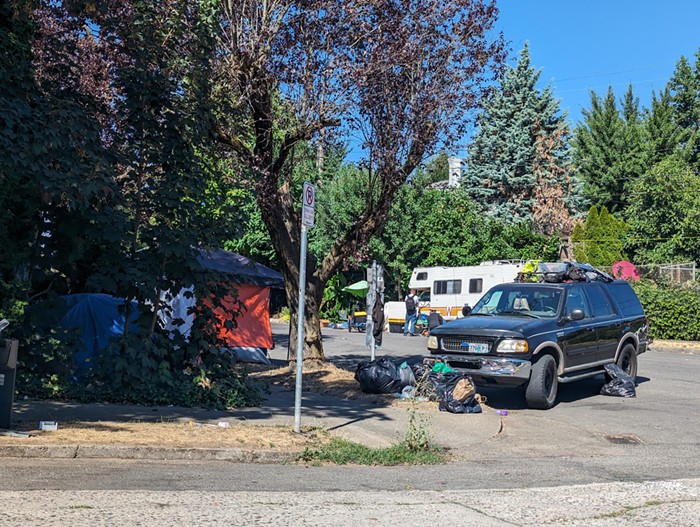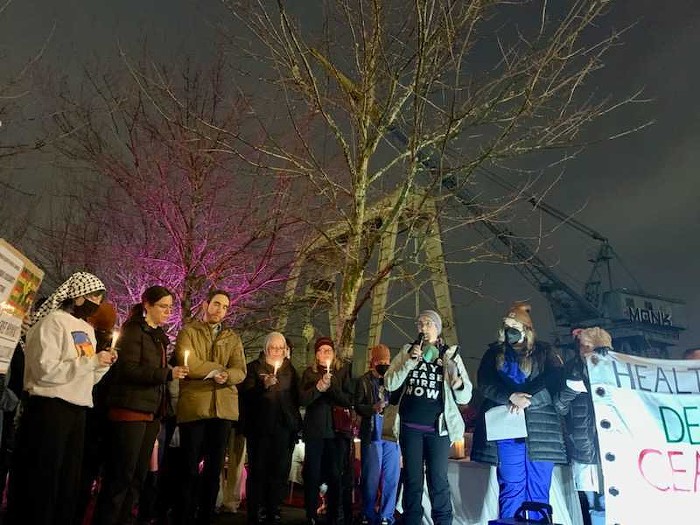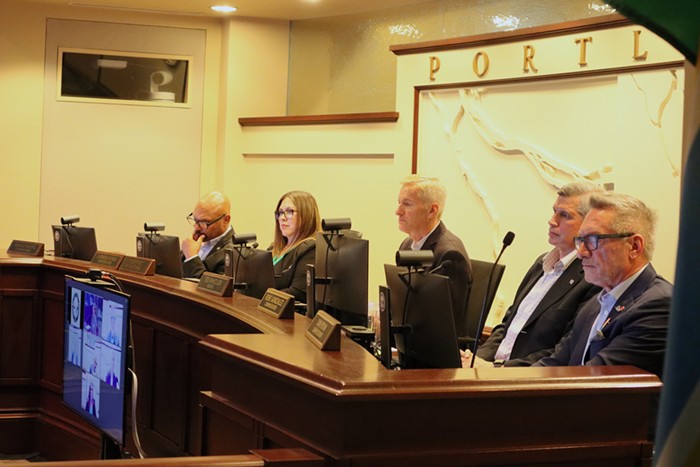
When Portland City Council considers how to treat the city's water for low levels of a common parasite later this month, it will mull over projects that could increase water bills by 1.3 percent or more.
That "reasonably decent number," presented with a host of caveats, was offered up by Portland Water Bureau Director Mike Stuhr on Wednesday to a volunteer board that makes recommendation on public utility rates. It's the first inkling of the increased bills ratepayers might see now that Portland's suddenly faced with the prospect of treating its water for the parasite Cryptosporidium (frequently just called "crypto"), which lives in feces and can cause violent illness if it finds its way into humans.
But the city will consider far more expensive options as well, even as long-time water activists scoff at the need for any sort of treatment.
Stuhr on Wednesday tentatively pegged the cost of a treatment facility that uses ultraviolet light to "deactivate" crypto at $100 million—the figure to which he tied that 1.3 percent increase. The city's had completed plans for such a facility since 2012, when it received exceedingly rare permission to duck a federal law mandating crypto treatment. It's unclear how out-of-date those plans are five years later, Stuhr said.
At the upper end of the price scale is a full-on filtration plant, which could cost $400 million or even $500 million. Stuhr suggested at Wednesday's meeting that such a project could amount to a 5.2 percent increase in water bills, but Nicole Adams, a water bureau spokesperson, told the Mercury that wasn't correct.
Stuhr also suggested there might be positive reasons for a dramatically more expensive project, saying: "In the regulatory world we try to prepare for what happens in the future. There are lots of things floating out there that have yet to be regulated. Filtration plants handle anything that tends to pop up."
According to Adams, a 1.3 percent increase in water bills would translate to 43 cents per month for the average household in year one. More generally, she says the water bureau expects to keep cost increases tied to crypto UV treatment at under $3 per month for "the entire life of the project." And she notes that "there are so many presumptions and variables embedded in this figure that it is a number that will most likely change."
For some context, in the forthcoming budget recently approved by city council, water bills are rising 6.7 percent.
There are plenty of citizens who plan to argue crypto treatment is unnecessary and wasteful. As we've reported, the city has not traditionally detected crypto in the water it pipes down from its Bull Run watershed. Portland easily met strict government requirements from 2012 until earlier this year, when tests suddenly began turning up the parasite again and again—in all, 19 individual "oocysts" of the creature were detected.
Water officials have suggested that the tests were a result of torrential rains washing animal feces into the watershed at higher rates than normal. Activists like Floy Jones, of the group Friends of the Reservoirs, and Scott Fernandez, argued Wednesday there is no proof that crypto is actually an issue.
Jones argues the types of parasites Portland has found in the water haven't been connected to human illness. She's urged the city to reach out to Senator Jeff Merkley and attempt to skirt the federal water quality rules. In response, the PWB tells the Mercury that scientists don't have a comprehensive list of all the forms of crypto that cause problems.
(Side note: If you're ever at one of these water hearings and you have an opportunity to sit next to Floy Jones, you should. She's a chorus of wry chuckling, muffled curses, loud sighs, and shuffling papers as officials are speaking.)
Fernandez told the volunteer board Wednesday that the city has been taking samples from the wrong part of the watershed, which the PWB says is patently false.
"After years and years and years of not seeing it, it's a little suspect—actually a lot suspect," says Fernandez, a former mayoral candidate who says he's worked in water biology. "$100 to $400 or $500 million for a problem that doesn't exist?"
What's not much up for debate is that crypto has not been a problem in Portland—and isn't one currently. The heavy rains have subsided, and the water bureau hasn't detected the parasite since mid-March. Even when it was detected, there were no confirmed instances of illness.
That being the case, the PWB has acknowledged that it wouldn't be absolutely impossible for it to dramatically ramp up water testing and come back with enough clean samples to still meet federal criteria for a variance to the law. But the bureau says the logistics behind such a move are "infeasible" and that there's no guarantee of success.
"Because of that rule and the math involved we didn’t feel like we could do enough testing to essentially test our way out of that number of oocysts," Stuhr said Wednesday. "It's very expensive."
But it's almost certainly not $100 million. When we asked the Water Bureau how much it might cost to increase testing in an attempt to stay in compliance with the variance, it came back with an estimate of $5 million—making clear that was only for factors in its control.
In order to sufficiently test enough water, the PWB says, it would have to increase its sampling to as high as 460 samples per week, and hire additional staff to do so. It would also face "considerable challenges" contracting with refrigerated trucks to carry those samples, spokesperson Jaymee Cuti says.
Then, Cuti says, the PWB would need to contract with between 15 and 20 labs that are qualified to test for crypto. She says that 43 exist, but nearly half don't take outside samples, and "several would likely not have capacity." The bureau would need to contract with additional labs on an emergency basis, she says.
The scenario would be made more difficult if all that extra testing wound up detecting even one instance of crypto, which—because of the federal government's strict rules—would require the city to test 13,450 more liters to attempt to meet regulations.
"As you can see, cost is only one factor to consider," Cuti says.
Rather than try to maintain its variance, the bureau sent a letter to state regulators (who enforce the federal rules) in March, announcing that it didn't believe it could meet requirements of the agreement by next January.
"We could have ridden through the year and summed the total up at the end, but that wouldn't have been very forthcoming or transparent," Stuhr said.
The Oregon Health Authority responded in May, giving the city until August 11 to propose a battle plan.
Council will meet June 27 to start talking about what that plan is.


















